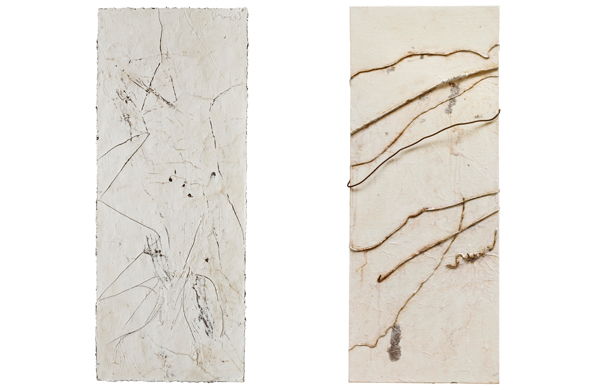
On July 13, 2013, Press Conference of “Chu Dialect in Wu Door/ Artistic Language of Hubei District Appears in Suzhou - Exhibition of Shang Yang” was held at the Beijing Hive Center for Contemporary Art (formerly Iberia Center for Contemporary Art), announcing that the latest solo exhibition of Shang Yang was about to open at Suzhou Museum on September 11, 2013. Zhu Qingsheng is the curator of the exhibition, hosted by Suzhou Museum, “Chinese Contemporary Art Yearbook” from Peking University, and Beijing Wall Art Culture Co.,Ltd., and organized by “Art Bank” magazine.
The press conference was presided over by Teng Yuning, deputy director of the Research Center of Vision and Image, Peking University, and honored guests including artist Shang Yang, curator Zhu Qingsheng, Su Yan, director of Beijing Wall Art Culture Co., Ltd., Kang Xueru, editor in chief of “Art Bank” magazine. Curator Zhu Qingsheng initially briefed the media on the curatorial idea of the exhibition, that it was put forward as the basis of long-term focus and research of “the issue of artistic subject”, as an important individual case in the “Chinese Contemporary Art Yearbook”, Shang Yang’s artistic developmental context was known well by the staff of the book as well as himself. Zhu Qingsheng said that Shang Yang was representative of the artists of “The Third Abstract”. The so-called “The Third Abstract” is “an artistic state beyond the West, nation, and policy”, which is based on the exploration of the subject of artistic language, while beyond the artistic practices of the two abstract arts including the pattern composition and spiritual performance.
[gallery link="file" ids="29886,29887,29888,29889,29890,29891,29892,29893,29894,29895,29896"]
Shang Yang admitted that he had always been cautious about “solo exhibitions”, and it was the third solo exhibition following “Dong Qichang’s Plan” (2009) and “Diary and Handwriting” (2012), in his artistic career over five decades. Invited by Suzhou Museum, it was a great opportunity for him to converse with this old city through an exhibition. Suzhou city is located in the capital of the ancient Wu Country, and called “Wu Door”, in the mid-Ming Dynasty, it emerged as a famous “Wu School” in the history of Chinese painting. Born in Sichuan Province, Shang Yang graduated from Hubei Academy of Fine Arts, living and working in Hubei for a long time, therefore he called his practice of painting language as “Chu Dialect”, where the title of “Chu Dialect in Wu Door” is diverted from.
At the turn of the 21st century, Shang Yang had a new thinking and inspection of the painting language and art subject with a lot of painting practice. After a crucial change, his art has become a phenomenon in Chinese contemporary art, so the art subject has been transformed into freedom and a growing state which comes from nothing and becomrs something, from the existing understanding of material nature and spiritual substance of the West.
Shang Yang said, it would promote the new development of “painting materials”, during this exhibition, the new works feature the old newspapers in Suzhou, in the 1980s, and earth in the earliest developed areas, formation of a dialogue between natural materials and post-industrial materials. In addition, successfully held in the Suzhou Museum, the exhibition will present a special dialogue, which is between Shang Yang and the well-known architect Leoh Ming Pei. The structure of the Suzhou Museum has been designed to create a highly integrated image frame by Pei. No matter who demonstrates the works in the building, he/ she must have a contest regarding the framework designed by Pei. Therefore, it’s an exhibition full of imagination, creativity and multiple dialogues.
The exhibition will be held at Suzhou Museum, on September 11 through to October 30, 2013.
Text by Zhu Li, translated by Chen Peihua and edited by Sue/CAFA ART INFO




























